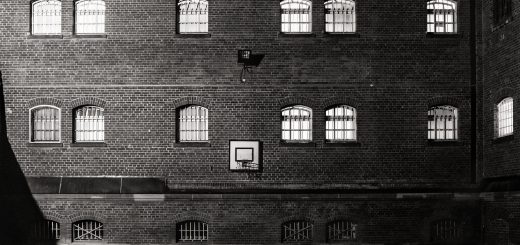R. v. Hills: SCC Clarifies Use of Reasonable Hypotheticals in Section 12 Challenge (Part I)

The Supreme Court of Canada [“SCC” or “The Court”] recently released its decision on three Alberta cases: R. v. Hills 2023 SCC 2 [“Hills”] and R. v. Hilbach 2023 SCC 3, the latter argued with the companion appeal, R. v. Zwozdesky. These cases challenge the constitutionality of mandatory minimum sentencing provisions, inviting the Court to clarify the interpretation of s. 12 of the Canadian Charter of Rights and Freedoms [“Charter”]. Section 12 guarantees the right not to be subjected to cruel and unusual treatment or punishment.
The SCC held that s. 244.2(3)(b) of the Criminal Code, RSC 1985, c C-46 [“the Code”], requiring a four-year minimum sentence for an aggravated form of the offence of intentionally discharging a firearm, violated s. 12 of the Charter. Parliament has since passed an amendment which removes mandatory minimum sentences for several drug-and firearm-related offences, including the one at issue in this case.
This post is the first of a two-part series on Hills. In this installment, I focus on the use of reasonable hypothetical scenarios to challenge the constitutionality of Charter provisions. In the second, I comment on the Court’s treatment of mandatory minimum sentencing regimes.
The Facts
Mr. Hills consumed a large amount of prescription drugs and alcohol, before leaving his home in Alberta with a loaded big game hunting rifle and a baseball bat (for details of the facts, see Hills, paras 16-20). The driver of a passing car called the police after Mr. Hills swung his bat at the car and fired a shot at it. Before the police arrived, Mr. Hills had smashed the windows of a parked car and fired his gun at a residential home; the round of shots went through the house’s living room window, through a wall and into another room, before it stopped in a drywall stud and bookcase. The shots were fired into parts of the home where a person could have been hit.
The house was occupied at the time by two parents and their two children. The father was in the room at which Mr. Hills had fired his first shot. When he heard Mr. Hills trying to break through the front door, the father opened the door and yelled at him to get away. Mr. Hills fired again. The father managed to flee to the basement with the rest of the family until the police arrived.
Mr. Hills could not recall any of these events and did not know why he had acted as he did.
Judicial History
Alberta Court of Queen’s Bench
Mr. Hills pled guilty to four offences related to causing property damage, pointing and discharging a firearm, and possession of a firearm without a licence (for details of the judgments below, see Hills, paras 21-28).
At sentencing, Mr. Hills challenged the constitutionality of s. 244.2(3)(b) of the Code, which imposes a four-year mandatory minimum sentence for intentionally discharging a non-restricted firearm into or at a house. To do so, Mr. Hills employed a reasonable hypothetical scenario to illustrate that the minimum sentence was grossly disproportionate and therefore, violated s. 12 of the Charter.
The reasonable hypothetical is a device used to assess the constitutionality of provisions based on the circumstances of a reasonable hypothetical offender, rather than those of the actual offender before the court. Mr. Hills relied on a scenario where a hypothetical offender intentionally discharges a firearm that is incapable of penetrating a typical residence’s wall, and therefore, is unlikely to pose a significant threat. A firearms expert testified that eight different types of air-powered guns like BB guns and paintball markers fit this criterion, thereby falling within the scope of the impugned provision.
Because the wording of the provision captures circumstances of low moral blameworthiness and risk of harm as described in the hypothetical scenario, the sentencing judge concluded that the impugned provision was unconstitutional. The judge imposed a lesser sentence of three and a half years of imprisonment for Mr. Hills.
Alberta Court of Appeal
The Crown appealed both the finding that the impugned provision violated s. 12 and the sentence imposed. The Alberta Court of Appeal (“ABCA”) allowed the appeal on both grounds.
Justice Antonio found that the expert evidence was insufficient for the purposes to which it was applied. She held that the psychological and social harm from reckless use of a firearm should also have been considered, concluding that an appropriate sentence for Mr. Hills was four and a half years of imprisonment. In their concurring opinions, Justices O’Ferrall and Wakeling called for the SCC to revisit its s. 12 jurisprudence, and that reasonable hypothetical scenarios ought not to be used in s. 12 challenges (Hills, para 27).
The SCC Decision
On appeal, the Court sought to clarify whether the mandatory minimum sentence under s. 244.2(3)(b) of the Code violates s. 12 of the Charter.
The Court reaffirmed that s. 12 is engaged whenever state action amounts to punishment and that imprisonment is the “penal sanction of last resort” (Hills, para 31). Proportionality is a central tenet of Canada’s sentencing regime, and courts should fix sentences in light of the principles of parity and proportionality (Hills, paras 56 and 145).
The Majority
Writing for the majority, Justice Martin held that the scenario advanced was reasonably foreseeable (para 153). The actus reus for the offence is made out when an offender discharges a “firearm,” even if it is incapable of penetrating a typical residential wall, into or at a building or structure. The mens rea is made out when a person intentionally discharges the “firearm” knowing that, or being reckless as to whether a person is present. Therefore, in a hypothetical scenario where a young person recklessly shoots a paintball gun at a residence as part of a game, both the actus reus and mens rea would be present, and the offender would be subject to the mandatory minimum sentence of four years imprisonment (para 154).
Applying the s. 12 framework to the facts in this hypothetical, the majority held that, given the low moral blameworthiness and risk of harm, a fit sentence in the hypothetical case would be up to 12 months’ probation. At the second stage of the gross disproportionality test, the majority found that the mandatory minimum sentence was grossly disproportionate; it applied to a wide spectrum of conduct, including acts that present little danger to the public, while disregarding sentencing norms and the harmful impact on a youthful offender. Therefore, s. 244.2(3)(b) of the Code violated s. 12. Since the Crown did not advance arguments that the punishment is justified under s. 1 of the Charter, the Court did not consider this issue.
The Court reinstated the sentencing judge’s lesser sentence for Mr. Hills. The provision was immediately declared of no force or effect, with the declaration applying retroactively.
The Dissent
Justice Côté, dissenting on her own, disagreed that the impugned provision captures the conduct contemplated in the hypothetical advanced by Mr. Hills. Rather, she found that the provision contained a double mens rea requirement. The provision targeted only those who had 1) intentionally discharged a firearm, and 2) had specifically turned their mind to the fact that discharging a firearm would jeopardize the life or safety of another person. The dissent’s interpretation turns on taking Parliament’s intention to be to limit conduct captured by the broad actus reus of the offence with the mental element of the offence. As such, only conduct that is both reckless and poses risk of harm to the lives and safety of others is captured by the provision.
The dissent found that the low end of the range of fit sentences for the offence properly interpreted is two years imprisonment. Although the mandatory minimum doubles this fit sentence, Justice Côté did not find that this additional period of imprisonment met the high threshold required for the Court to strike down a provision under s. 12.
Commentary
In this case, the SCC reaffirmed that the use of reasonable hypotheticals are justified because 1) it is the nature of the law that is at issue, not the claimant’s status, and because 2) it promotes the effective use of judicial resources and the rule of law by protecting citizens from abuse of state power (Hills, paras 72-73). Reasonable hypotheticals allow judges to scrutinize sentencing provisions without having to wait for the ideal facts to materialize before an unconstitutional law can be struck down.
However, critics have long challenged the use of reasonable hypotheticals. One driving criticism is the “air of unreality” where the challenged provisions are constitutional in the actual circumstances of the case, but unconstitutional in hypothetical circumstances.
In an attempt to address such concerns, the Court has circumscribed the use of reasonable hypotheticals. The hypothetical must be reasonably foreseeable, in the range of the conduct contemplated in the offence, and may consider personal characteristics without being too remote or far-fetched (Hills, para 77).
But despite the Court’s efforts to limit acceptable hypotheticals, the concerns of detractors may remain unallayed. The fact that provisions may be struck down based on a hypothetical that judges themselves cannot all agree is reasonable, or would even give rise to an offence at all, calls into question a fundamental assumption, that only hypotheticals which are uncontroversially captured within the nature of the impugned offence provision will be considered by courts.
This was the disagreement that occurred between the majority and the dissent in this case. On the dissent’s interpretation of the provision, a man who intentionally fires a hunting rifle at the roofline of a house that he knew to be occupied, would be captured in the ambit of the impugned provision. But it would not capture recklessly discharging a firearm generally or in the case of the reasonably hypothetical (paras 190 and 198). The majority, on the other hand, held that the double mens rea of intention and knowledge or recklessness as to the presence of others in the wording of the offence fails to sufficiently limit the offence to highly blameworthy conduct involving actual guns.
Such disagreement on an inherently speculative judicial exercise, with its accompanying evidentiary concerns, likely does little to convince skeptics of the utility of hypotheticals in constitutional challenges. Moreover, the fact that in both of the recent s. 12 challenges preceding Hills, where hypotheticals were relied on had strong SCC dissents, does not strike confidence in the consistency of the Court’s position on this issue [See R. v. Nur 2015 SCC 15 and R. v. Lloyd 2016 SCC 13].
Having said that, the majority of the SCC is likely motivated by a desire to achieve consistency in the Court’s recent jurisprudence. The Court has struck down provisions that eliminate judicial discretion in sentencing in the past (See for example, R. v. Bissonnette 2022 SCC 23 and R. v. Boudreault 2018 SCC 58). Working with the hypothetical scenario advanced in this case meant that the majority would favour a broad interpretation of the offence, even if it must do so by accepting a hypothetical scenario that stretches credulity. By contrast, the dissent adopted a narrower reading of the scope of the offence, paying greater attention to the legislative intent and and the presumption of constitutional compliance to reach its conclusion.
Why has the SCC, and specifically the majority in this case, been consistent in insisting that completely eliminating judicial discretion in sentencing provisions are constitutionally vulnerable? A simple answer could be that sentencing is inherently a judicial function, and the SCC is rightly wary of shifting discretionary powers from judges to prosecutors, impeding courts’ ability to craft fit and proportionate sentences. In the second instalment of this post, I discuss the issue of judicial versus prosecutorial discretion as it relates to sentencing.







Join the conversation